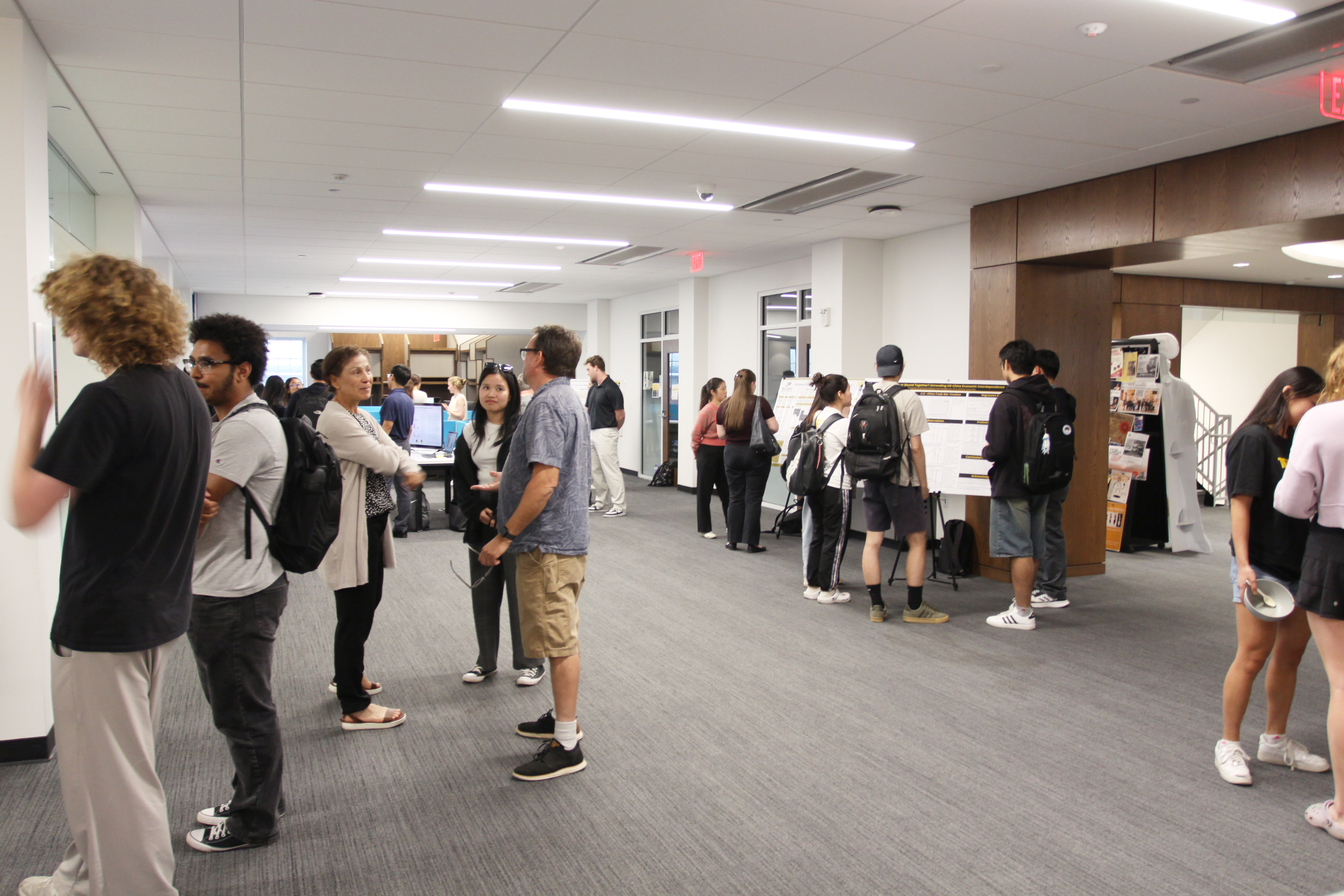
Nicotine-Seeking and Avoidance Behavior in Zebrafish Mutants
Files
Document Type
Poster
Publication Date
Fall 10-6-2022
Abstract
Nicotine activates nicotinic acetylcholine receptors in the brain and peripheral nervous system and triggers nicotine-seeking or nicotine-avoidance. There is evidence from genome-wide association studies in humans that genomic variances of nicotinic acetylcholine receptor genes of the types alpha3 (chrna3), alpha5 (chrna5) and beta 4 (chrnb4) contribute to heavy smoking and early onset of smoking. This project explored the role of the alpha3 nicotinic acetylcholine receptor subunit in nicotine-seeking and avoidance behavior in larval zebrafish. We used zebrafish with the mutant allele sa14384 of the chrna3 gene that represents a missense mutation and causes a stop codon in the alpha3 receptor gene (chrna3). The mutation would affect the function of heteromeric nicotinic acetylcholine receptor types that contain alpha3 subunits such as the alpha3/beta2 and alpha3/beta4 nicotinic acetylcholine receptors. The chrna3 mutant allele (sa14384) was associated differently with nicotine-seekers, nicotine-avoiders and non-seekers. Pre-treatment with a blocker (antagonist) for an alpha3/beta4 receptor in normal wildtype larval zebrafish increased the percentage of nicotine avoiders and reduced the percentage of nicotine seekers at a high nicotine test concentration. Moreover, acute nicotine response experiments using the Daniovision system showed that the alpha3/beta4 acetylcholine receptor blocker causes a reduced response in zebrafish from heterozygous parents. Overall, obtained results indicate that the alpha3 acetylcholine receptor subunit is slightly linked to nicotine seeking and avoidance behavior in larval zebrafish. Discrepancies that we observed could be based on known intricate functions of the alpha3 receptor subunit. To gain better insight into the function of the alpha3 receptor subunit future experiments will employ a larval zebrafish strain with two mutant alleles of the alpha 3 acetylcholine receptor subunit.
Recommended Citation
Araya, Lidya; Ngoc, Thanh; Nguyen, Thien; Rhodes, Daniel; and Schneider, Henning, "Nicotine-Seeking and Avoidance Behavior in Zebrafish Mutants" (2022). Annual Student Research Poster Session. 102.
https://scholarship.depauw.edu/srfposters/102




Funding and Acknowledgements
Source of Funding: FDC Student-Faculty Summer Research, Steven S. Clark Endowed Fund for Student-Faculty Environmental Research